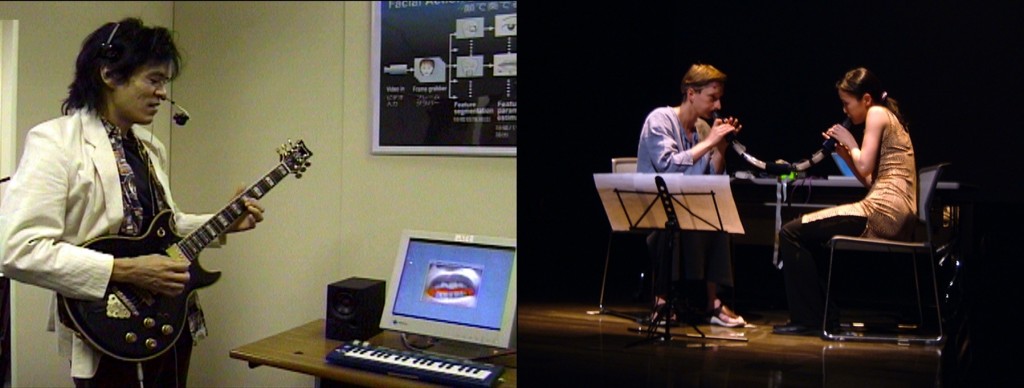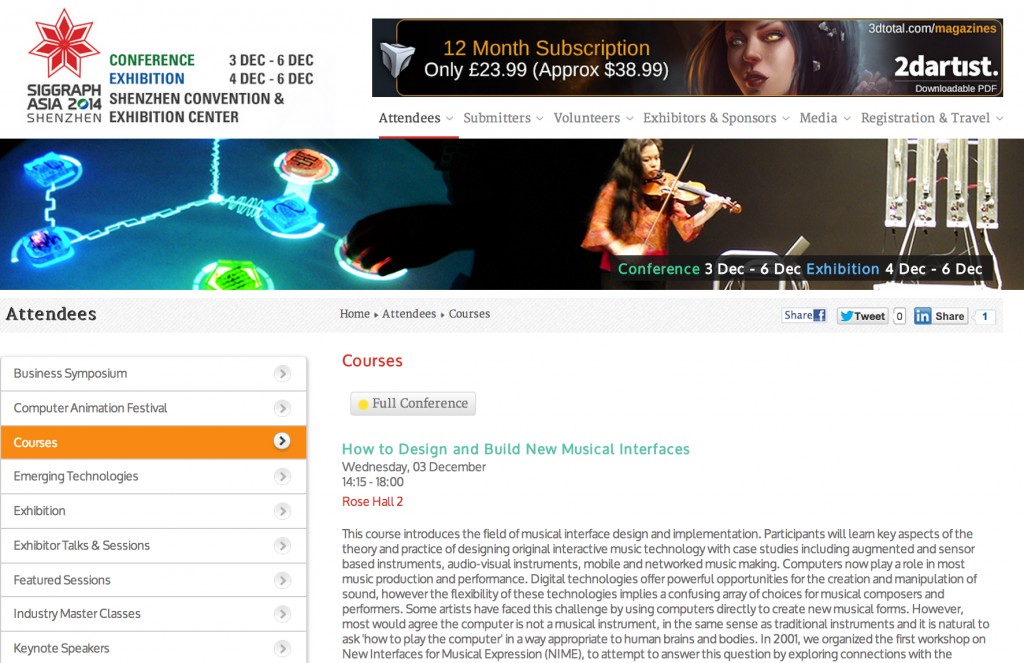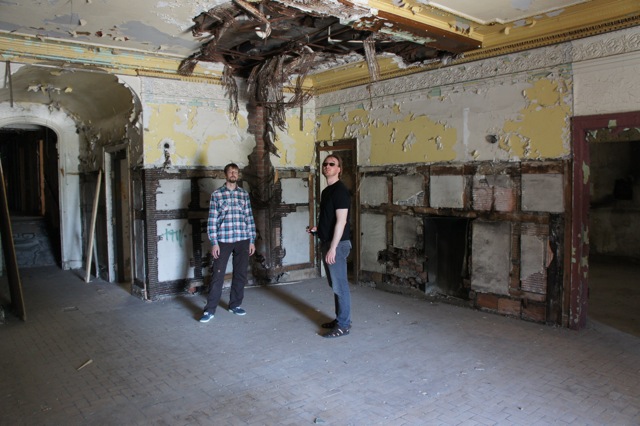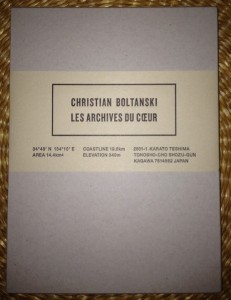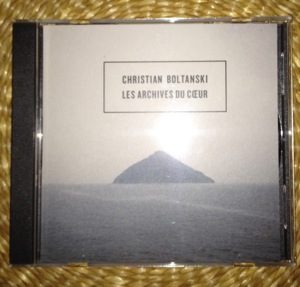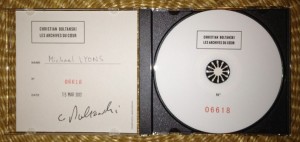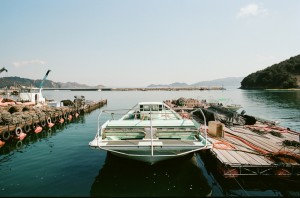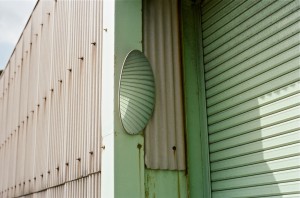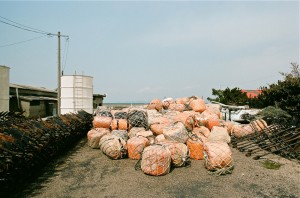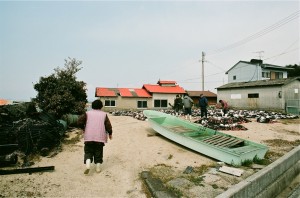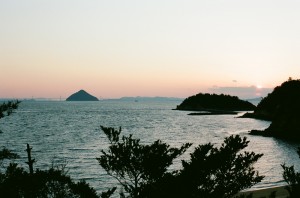Happy to announce that I have been awarded an artistic residency at Hangar, an art centre located in Barcelona. The theme of my project is ‘Optisonic Composition’.
Category Archives: Travel
ACM CHI 2015 Course
We’ll be offering the ‘Introduction to Creating Musical Interfaces‘ course again this year at CHI 2015, which is to be held in Seoul. The course has also been offered at SIGGRAPH, SIGGRAPH Asia, and NIME.
ACM CHI 2015 Course proposal on Musical Interfaces Accepted!
Our CHI 2015 course proposal, ‘Introduction to Creating Musical Interfaces’ has been accepted! By chance this was submission #101, and I’m thinking of retitling the course ‘Musical Interfaces 101’.
ACM CHI is the largest and most influential conference in the field of human-computer interaction (ヒューマン•インタフェース in Japanese).
The ACM CHI 2015 conference will be held in the Gangnam district of Seoul and pop musician Psy will be keynote speaker this year.
We also offer versions of the course at SIGGRAPH, SIGGRAPH ASIA, and NIME itself.

Live Performance at the Opening Reception of ACM Multimedia 2013
A little more than one year ago, Alex Jaimes and I collaborated on a live intermedia performance for the Opening Reception of the ACM Multimedia 2013 conference in Barcelona Spain. The video below records part of the performance, but it was made with a small pocket digital camera, using the built-in mic, and I was very preoccupied with the performance itself. Unfortunately this is the only record I have of the performance.
It was held October 24, 2013 at the Foment de les Arts i del Disseny, which is housed in an ancient stone building next to Barcelona’s Contemporary Art Museum. We worked with contemporary dancer Laida Azkona and violinist Paloma de Juan who was one of Alex’s colleagues at Yahoo Research Labs in Barcelona. Paloma’s day job is research engineer, whereas Laida is a profession contemporary dancer who has studied and performed around the world.
Again the quality of this video recording is not good, but perhaps it gives some impression of the performance.
The next video is from the first rehearsal for the live performance. Alex, Laida, and I met at my apartment the same day I arrived in Barcelona and we had our first rehearsal a day or two later. We had two more rehearsals after that, which includes a brief one after we had setup and sound-checked on the day of the opening reception. Since Alex and I worked remotely we could not prepare much beforehand, though I had already written and tested the programs needed for capturing movements and converting them to OSC for controlling the video projections. The video clips themselves were edited at the last moment, partly during a visit to Alex’s home in Barcelona. It was a busy but exciting trip!
SIGGRAPH ASIA 2014 Course: How to Design and Build New Musical Interfaces
Our course proposal was accepted at SIGGRAPH ASIA 2014. The course will be held December 3, 2014 in Shenzhen China. More information here. It will be great to have active participation at SIGGRAPH ASIA from Ritsumeikan !
SIGGRAPH Asia 2012: Advances in NIME
Prof. Sid Fels (UBC) and I will be presenting our course on Advances in New Interfaces for Musical Expression at the upcoming SIGGRAPH Asia conference to be held at the Singapore Expo in November 2012. Looking forward to spending more time in Singapore.
The SIGGRAPH Asia web site is using our photos as the main banner for the courses page, and these are also visible on the preview slideshow playing on the main conference page.
Ruins of Detroit
Another NIME conference has reached a successful conclusion and I’m heading back to Japan. Here I am in the ruins of Detroit with two key members of the NIME community. Below, me with Dr. Alexander Refsum Jensenius of the Norwegian Academy of Music and University of Oslo, and current Chair of the NIME Steering Committee. Above, Alexander with Professor Dan Overholt of the University of Aalborg, Denmark.
Les Archives du Cœur
Christian Boltanski, with the help of visitors to the “Archives of the Heart” located on a remote part of Teshima Island, is compiling an album of human heartbeats from around the world. Participants self-record the sound of their beating heart for inclusion in an archive at a dedicated building, which opened during the 2010 Setouchi Triennale. The building also has recording rooms and a special listening room where the heart beats are played back at loud volume. I recorded the sound of my heart on March 15, 2012 when I visited Teshima Island. Here’s how the recorded audio waveform looks:
Clearly it’s not a completely quiet recording, as the microphone was held against the chest manually. Have a listen (headphones recommended):
I♥フィルム
I always bring both film and digital cameras on my travels. This time I brought only my iPhone 4s, Nikon F3 (HP model) and two lenses Nikkor 24mm f2.8 and Nikkor 50mm f2.0 on my trip to Naoshima. I’ve had the 50/2.0 lens since I bought it new in 1977, when I was 15 years old. These pictures were taken using Kodak Portra 160 film (both NC and new types).
Teshima Art Museum – 豊島美術館

The Teshima Art Museum opened in 2011. The center piece of this outdoor ‘museum’ is a concrete thin-shell structure by artist Rei Naito and architect Ryue Nishizawa. Two oval openings in the roof let pass the sounds of the trees, birds, the wind, and the nearby Inland Sea. Water seeps slowly through many tiny holes in the floor, aggregates into drops of various sizes then snakes towards the lowest local point, where it empties again into the tiny holes. Visitors wander the strangely shaped, barren space, a singular environment that selectively amplifies sounds inside and outside the shell. Gradually attention is drawn towards the drama of surface tension and energy minimization being played upon the floor. Watching the surprisingly complex dynamic shapes of the water drops suggests fantasies about the origins of life on earth. The remarkable and somewhat mysterious physical properties of water must be part of what led living matter to get a start on the planet. The shell provides a shelter for quiet and focused meditation on the sounds of the surrounding natural environment and the movements of water on the smooth subtly shaped concrete. Late 20th century technology, in the form of the thin concrete shell, initially visually impressive both outside and inside, gradually slips into the background.
From the museum home page:
Uniting the creative visions of artist Rei Naito and architect Ryue Nishizawa, Teshima Art Museum stands on a hill on the island of Teshima overlooking the Inland Sea. Shaped like a drop of water, the museum lies in a corner of the spacious grounds surrounded by once-fallow rice terraces that have been restored with help from local residents.
Structurally, the building consists of a concrete shell, devoid of pillars, coving a space 40 by 60 meters. On the highest ceiling 4.5 meters above, two oval openings allow the air, sounds, and light of the world outside into this organic space where nature and architecture seem intimately interconnected. Inside one finds an ever-flowing fountains and an ambiance that changes from hour to hour and season to season, revealing countless appearances as time passes.

